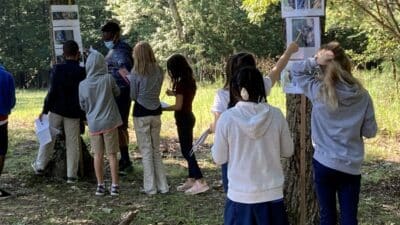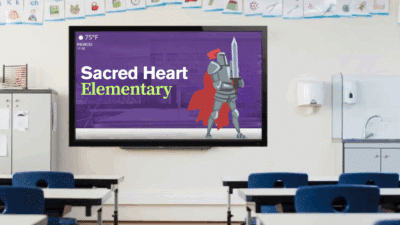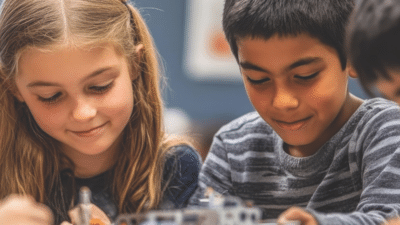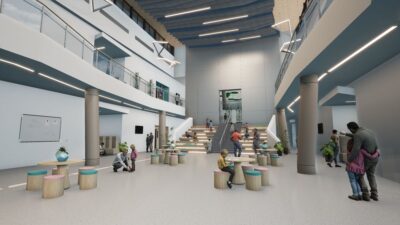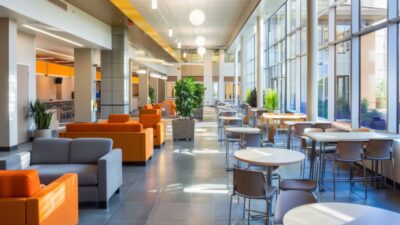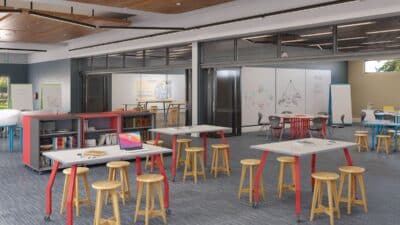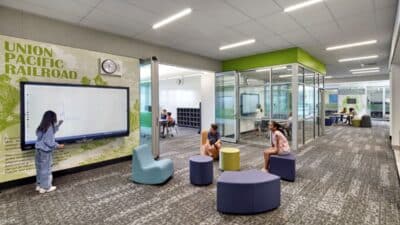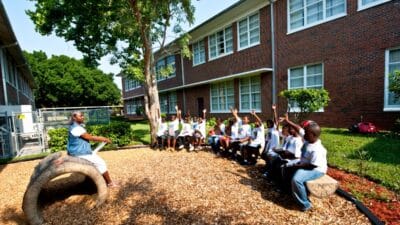School Facilities & Campus
School Facilities & Campus
Everything on your grounds contributes to the success of your school, both inside and outside the buildings. Get purchasing tips for the best products for effective and efficient operation.
Stewarding Facilities Through Smart Capital Expenditure Planning
In many schools, maintenance of facilities only becomes a priority when a crisis strikes, such as a leaking roof, a failed HVAC system, or a major plumbing issue. By then, leadership is often forced into reactive decision-making that strains budgets and disrupts learning. Yet, just as ministries carefully plan curriculum, staffing, and outreach, facilities
Outdoor Education Requires Intention
The health and wellness of students and school employees are suffering. Common symptoms are negatively correlated with societal trends. Each symptom has its own potential treatment, but they share root causes that point to one overarching mitigation strategy. If we want to see joyful and energetic teaching and learning in our schools, then the
Why Digital Signage Is a Smart Investment for Faith-Based Schools
As Christian educators, every dollar spent must be done with purpose. Budgets are tight, resources are limited, and yet the need for clear communication, community engagement, and campus-wide connection continues to grow. That’s where digital signage comes in—not as a luxury, but as a strategic tool. For many faith-based schools, digital signage may seem
Makerspaces: Crafting STEM’s Future
In today’s fast-evolving world, STEM (Science, Technology, Engineering, and Mathematics) education is a cornerstone of preparing students for the future. With the rise of artificial intelligence, coding, and digital technologies, schools are racing to equip students with cutting-edge skills. Yet, one truth remains timeless: children learn best by doing. Enter the makerspace—a vibrant, tactile environment
Shifts & Trends in the Design of K-12 Private School Facilities
One of the most profound influences on private school facility design has been the shift toward more holistic and flexible learning environments. In the early 2000s, most private school buildings adhered to classic designs characterized by single-purpose classrooms arranged along linear hallways. Today, our school designs emphasize openness, adaptability, and student engagement. Schools are
School Lunchroom Design Considerations
School kitchen design plays a vital role in ensuring the functionality and safety of school cafeterias. It creates a comprehensive kitchen that meets students’ demands. An effectively designed school kitchen maximizes space, enhances workflow, and meets students’ nutritional needs. The primary objectives when designing a school kitchen are safety, efficiency, compliance with health codes,
The Power of Gathering Spaces
Are gathering spaces important? You bet! We know from research and from experience the close correlation between personal interactions, job performance, and cultural quality. Campus spaces should be more than just a functional asset—they can become a powerful strategic tool for authentic school growth. Think about gathering spaces in the context of our own
Why K-12 Schools Are Adopting Open Learning Spaces
The landscape of K-12 education is experiencing a paradigm shift, moving from traditional, teacher-centered methods to innovative, student-centered learning environments. Open learning environments are at the forefront of this transformation, championing a model where students take the reins of their education, guided by educators who serve more as mentors than lecturers. We are at
Designing Schools for the Digital Age
In a world where technology’s rapid pace has reshaped how we live, work, and communicate, it should be no surprise that it’s also changing the K-12 education landscape. This digital transformation in education has brought about a new era of learning that extends beyond the traditional classroom setting. Technology integration in schools has revolutionized
Outdoor Classrooms Expand the Learning Environment
Through our global collaboration with schools, we’ve gained valuable insights from principals and educators who consistently strive to enhance learning experiences, optimize facility use and create environments that support students’ academic and personal growth. One innovative approach that has gained momentum is the concept of outdoor classrooms. These unique spaces not only offer a



